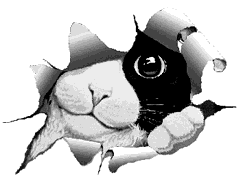
JAPANESE BOBTAIL
ORIGIN
The Japanese Bobtail is a natural breed. From written records it seems certain that the domestic cat first arrived in Japan from China or Korea at least one thousand years ago. The Japanese Bobtail breed has certainly existed in Japan for many centuries; it is featured in many ancient prints and paintings.( a large painting from the 15th century hangs in the Freer Gallery of Art in the Smithsonian Institute in Washington DC, showing two lovely longhaired Japanese Bobtails). In 1968 the late Elizabeth Freret imported the first three Japanese Bobtails to the United States from Japan. In 1971 they were given provisional status in The Cat Fanciersí Association (CFA) and were accepted for championship competition in 1976. In 1993 the longhair Japanese Bobtail was accepted by CFA for championship competition.
ASPECT
Japanese Bobtails are strong and healthy cats. Their coats are parted neatly down the back and their tails are large and plumey. The longhair Japanese Bobtail exhibits all the same characteristics as the shorthair Bobtail. They usually have litters of three to four kittens that are extremely large for newborns. Compared to other breeds, they are active earlier, walk earlier and start getting into trouble earlier. This breed has a low kitten mortality rate and high disease resistance. Kittens are never born tailless, nor are they born with full tails. The genetic factor which created the Japanese Bobtail is completely different from the Manx, a naturally tailless cat. Unlike the Manx, it is due to recessive genes and breeds true. The two breeds are not related in any way. Not only are their tails different, but the body types are completely opposite.Any color except the Siamese pattern or Abyssinian type agouti is permitted, the most popular colors are the mi-ke and those colors that can be used to create it: white, black, red, black and white, red and white, and tortoiseshell. Vividly contrasting colors and bold dramatic markings are preferred on the bi-colors.
CHARACTER
They like to carry things in their mouths, and most enjoy a good game of fetch. Masters of the pounce, these cats love to ride on shoulders. They are good travelers. They donít panic at shows or strange hotel rooms, they adjust to dogs and other animals, and are especially good with children. They are active, intelligent, talkative cats. Their soft voices are capable of nearly a whole scale of tones; some people say they sing. Since they adore human companionship they almost always speak when spoken to.
CARE
One will give it a bath a month.